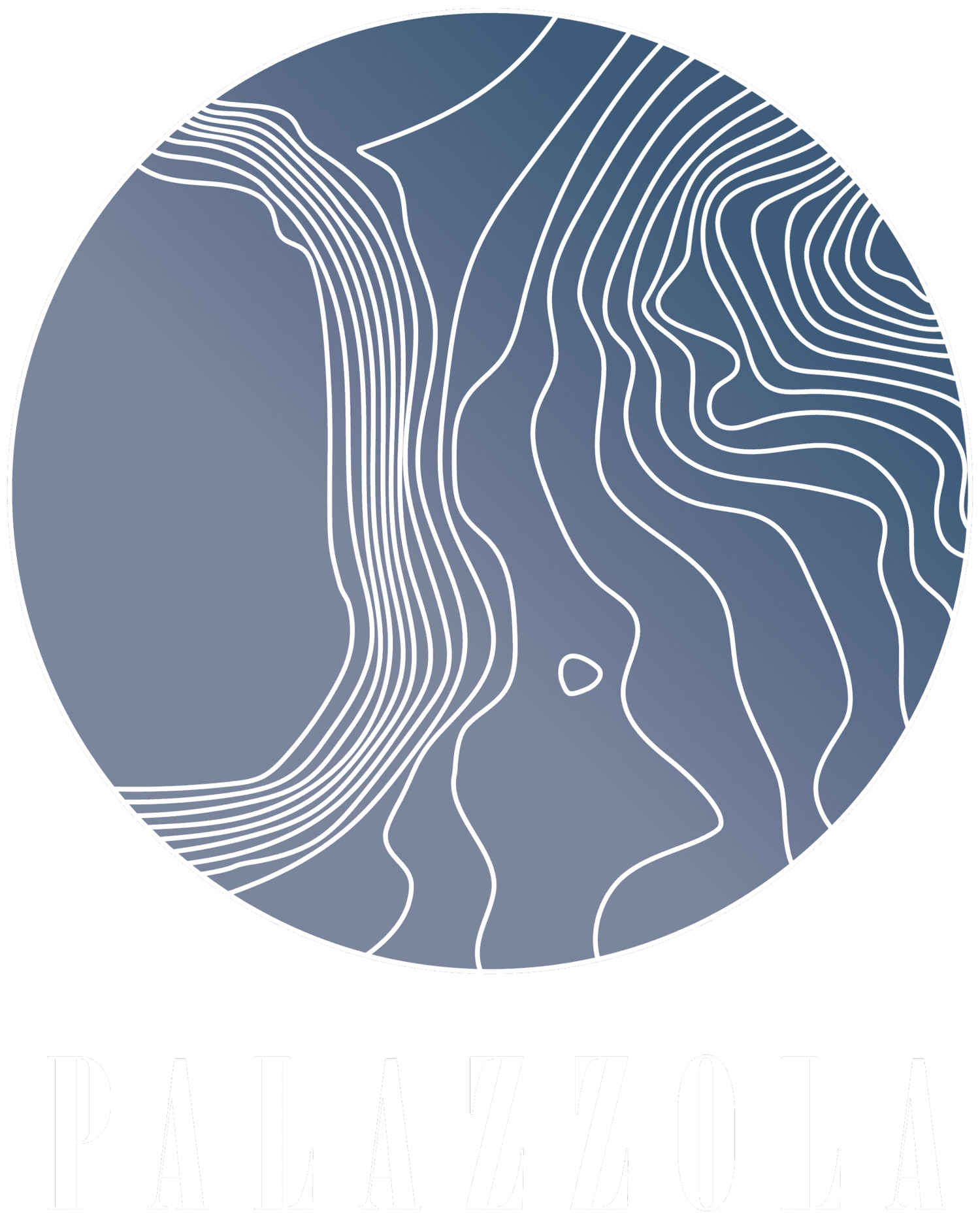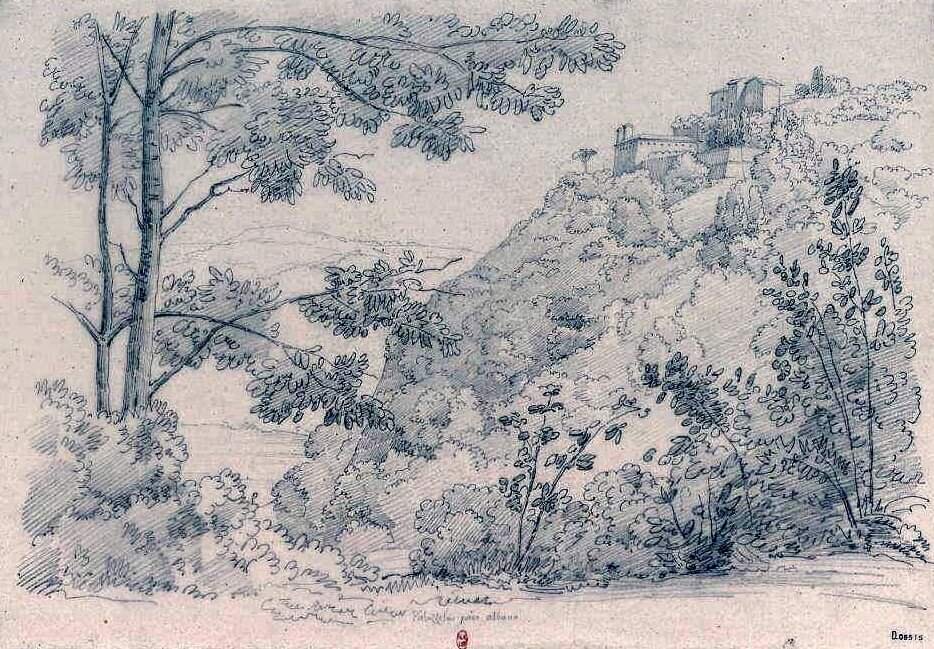Earliest inhabitants
The site of Palazzola has a very long history, going back to the Bronze Age people of the 17th century B.C.
Palazzola’s Latin name was Palatiolus, and as you approach along the via dei Laghi, Palazzola appears set against the backdrop of Monte Cavo. This was once known as Mons Albanus, with a temple dedicated to Jupiter and intact sections of a Roman road, the Via Sacra.
Legend has it that Romulus and Remus, the founders of Rome, were suckled by a she-wolf on Monte Cavo. More certain is that Hannibal made his camp here during his assault on Rome.
There was also a Roman villa at Palazzola with the remains of water conduits still visible along the Albano path. Next to the Villa is the enormous rock tomb of a Roman consul, possibly G. Cornelius Scipio Hispalus, who died c. 176 B.C.
A religious house
The Romans abandoned their villa around the 4th century; and by the 10th century, Christian hermits were living in caves on the slopes of the lake. The remains of this early hermitage are still visible. In time, the hermits moved into the ruins of Palatiolus and became Augustinians.
Cistercians from Tre Fontane Abbey near Rome took over the building in 1244, when it was known as Santa Maria in Palatiolis. There are clear similarities between the Palazzola church, Our Lady of the Snows, and that of Tre Fontane: especially the roof design and the small rose window. Carthusians replaced the Cistercians, and they were in turn replaced by Franciscans in the fifteenth century. Some of the very elegant columns from the early cloister can be seen in the windows on the upper corridors of the Old Wing.
The visit by Pope Pius II
Pope Pius II (Aeneas Sylvius Piccolomini) was Pope from 1458 to 1464. The visit to Palazzola in 1463 came towards the end of his life. He was invited to visit the monastery of St Paul in Albano on the way to Rocca di Papa. This is an extract from his Memoirs:
“On the way he visited the monastery of Santa Maria Palazzuola and attended Masses there. This is an ancient church, not very large, with one archway, and a vestibule supported on marble columns. There are dwellings for the monks, and service quarters convenient enough but not very attractive, and fallen into disrepair with age. The place overhangs the Alban Lake. The rock has been cut away far enough to give room for the monastery and garden. Grottoes too have been quarried out where abundance of water bubbles up and the clear springs fill the fish ponds. It is delightful in summer to see the cold sparkling water thrown high into the air through pipes and it is available for all the needs of the monks. In a corner beyond the beautifully terraced garden is a large natural cave always shady till noon, which is like a hall where a number of tables can be set out. There too is an abundant spring of clear and never-failing water gushes forth and fills a fishpond nearby. […] At the left before you enter the monastery, there is a high wall-like rock on which according to ancient custom were sculptured the fasces of a Roman consul and twelve axes.”
Six were covered with ivy, six were still visible. Pius ordered the ivy to be cleared away to encourage the memory of antiquity.
A Portuguese Franciscan, Jose Maria Fonseca, rebuilt the friary and the church in the 1700s and laid out the garden. For many years, the main entrance to Palazzola was through the large gates now leading to the swimming pool. Two tablets in the cloister record his efforts. Apart from a gap of 20 years the Franciscans remained at Palazzola until the early 20th century.
A group of Freemasons took their place for a short time until during the First World War Dr Carlo Arnaldi ran a clinic at Palazzola for, among others, recovering alcoholics. He bedecked the walls with different axioms to uplift his patients, one of which survives in the refectory: ‘Mangiare adagio e masticare bene’ (Eat slowly and chew well).
The English College comes to Palazzola
Founded in 1579 on the site of a 14th-century hostel for English pilgrims, the Venerable English College in Rome is a seminary which trains priests for English and Welsh dioceses.
At one time, students returned to England only once during their seven-year course of study at the Gregorian University. To escape the stifling Roman summers, they moved to a much-loved house at the village of Monte Porzio near Frascati in the cool of the Alban Hills. The house was, however, too small for the number of students. In 1920 the Rector, Mgr (later Cardinal) Hinsley, met Dr Arnaldi who, despite receiving a number of better offers, agreed to sell Palazzola to the College for 260,000 lire (approx. €130). He had bought it five years earlier for 63,000 lire (approx. €32). When the students moved in, one of their first tasks was to dig the swimming pool. Hinsley’s successor, William Godfrey, later also a Cardinal, added the New Wing, providing 25 additional rooms.
Palazzola on the front line
For twenty years the College moved to Palazzola every summer; but when Italy declared war on Britain in 1940, the students returned to England and took up temporary residence at Stonyhurst College. German troops occupied Palazzola and during the severe winter of early 1944, they burned much of the furniture and the library books. Palazzola was soon on the front line as the Germans set up artillery positions above the garden on the upper field (known by the students as the “Sforza”, the surname of the previous owner) to shell the allies landing at Anzio. The allies responded with frequent air raids, causing extensive damage.
In one incident during the war the late caretaker, Alfredo Piacentini—then aged 21—rescued a young German soldier who lay wounded in the nearby woods after an air raid. His name was Werner Wendt and fifteen years later he arrived back at Palazzola to thank Alfredo, bringing gifts of German sausage and wine. It was a happy reunion.
Alfredo, who had served in the Italian army, had a lucky escape when a group of retreating SS soldiers ordered him to come with them, for forced labour, or possibly worse. When they allowed him to return to the house for his coat, Alfredo slipped out the back door, down the garden and leapt over the wall of the swimming pool onto the Albano path some distance below. In the process he injured his leg badly but he escaped and for the rest of his life walked with a limp. Alfredo’s son, Giuseppe Piacentini, is today Administrator at Palazzola, working alongside his English wife, Julie, who is the Domestic Manager.
The advancing Americans captured Palazzola, but left after a week, looting most of the remaining furniture. Mgr Carroll-Abbing, a former student of the College and an Irish citizen, remained in Rome during the war, and worked hard to protect Palazzola. He recovered some of the furniture while Alfredo managed to dissuade some battle-hardened US paratroopers from looting the cellar.
The College returns
After the war, the Rector inspected Palazzola prior to the return of the students from England, and his letters describe the burnt-out houses and vehicles in Albano. Air raids had damaged much of Palazzola, and blown out the chapel windows. There was an abandoned tank on the Sforza, and several hundred German soldiers killed in the fighting near Velletri had been buried nearby. The Germans had also painted a series of pleasant murals in the refectory, some of which survive. The erotic ones painted by the Americans were removed before the students returned.
After extensive repairs, life returned almost to normal with the students spending their summers at Palazzola as before the war. But by the 1970s, the students went back to England each summer and the College was under serious financial pressure to sell Palazzola. Happily this did not happen. Instead, a dedicated group put together an ambitious plan to develop the property and put it on a commercial footing by making it available to groups all year round. This was in time highly successful, and has secured Palazzola for future generations to enjoy.
Further reading
Marina Cogotti (ed.), Convento di Palazzolo on the Shores of Lake Albano (Roma: Gangemi Editore, 2004)
Mgr Anthony Philpot, A Short History of Palazzola (Rome: Venerable English College, 2001)
The Venerabile, annual magazine of the Venerable English College, passim, esp. Fr Terry McSweeney, Alfredo Piacentini obituary, vol. XXXIII, no. 1, 2003–4, pp. 77–81; and the multi-part history of Palazzola by Thomas Ashby and J. Garvin in vol. I, no. 4, April 1924; vol. II, no. 1, October 1924; vol. II, no. 2, April 1925; and vol. II, no. 3, October 1925
The Secret Memoirs of a Renaissance Pope (The Folio Society, 1988)






